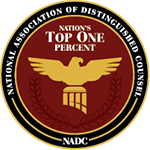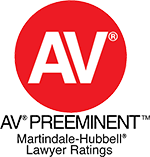Bank Secrecy Act
The practice of money laundering is defined by Blacks Law Dictionary as “the act of transferring illegally obtained money through legitimate people or accounts so that its original source cannot be traced.”
This practice is criminalized under the Financial Recordkeeping and Reporting of Currency and Foreign Transactions Act of 1970 (31 U.S.C. 1051 et seq.) or as is often referred to as “The Bank Secrecy Act” (BSA).
In 1986 the BSA was further expanded on to encompass a range of practices money launderers had used to circumvent the law by under the Money Laundering Control Act (18 USC 1956) which assigned criminal liability to an individual, bank, or institution that knowingly assists in the laundering of money or intentionally structures transactions in such a way so as to avoid the reporting requirements.
When is Best Time to Act?
Investigations by the authorities uncovering violations of the BSA and subsequent laws can take years to conclude depending on the complexity of the scheme involved and the behavior of those involved. Due to the lengthy nature of the investigations that can lead to an indictment it is important to seek experienced counsel as soon as you become aware that you could potentially be subject of the investigation and/or are under threat of indictment.
Types of BSA Crimes/Charges
Violations of the BSA and Money Laundering Control Act often coincide with charges filed under any number of illegal activities in which criminal proceeds could originate.
BSA Criminal Schemes
Criminal schemes related to the BSA and subsequent Money Laundering Statutes involve engaging in financial transactions with the proceeds of criminal activity in order to conceal the nature of the proceeds or to use the proceeds to further future offenses; transporting funds generated by criminal activities; or engaging in a financial transaction with criminal proceeds in order to evade taxes.
Related Crimes
Predicate offenses to money laundering normally consists of murder, kidnapping, gambling, arson, robbery, bribery, extortion, dealing in obscene matter, or dealing in a controlled substance or listed chemical (as defined in Section 102 of the Controlled Substances Act), which is chargeable under state law and punishable by imprisonment for more than one year.
Further, the lesser-included offenses often coincide with money laundering charges:
- 18 USC §2 (aiding and abetting)
- 18 USC §371 or 18 USC §1956(h) (conspiracy)
- 18 USC §1001 (false statements)
- 18 USC §1510(b)(3)(B)(i) (obstruction of 18 USC §1956 or 18 USC §1957 or Title 31 investigations)
- 18 USC §1621 (perjury)
- 18 USC §1960 (illegal money transmitting business)
- 31 USC §5322 (Title 31 criminal penalties)
- 31 USC §5324 (structuring)
- 31 USC §5332 (bulk cash smuggling)
- 18 USC §1028 and 18 USC §1028A (identity theft)
Regulations/Legislation
The BSA deals primary with reporting requirement whereas the specific criminal prohibition of money laundering is contained in Section 1956(a)(1) makes criminal financial transactions involving the proceeds of “specified unlawful activities” (1) with the intent to promote further predicate offenses; (2) with the intent to evade taxation; (3) knowing the transaction is designed to launder the proceeds; or (4) knowing the transaction is designed to avoid anti-laundering reporting requirements.
Penalties & Punishment
Willful violations of the BSA can bring a criminal fine of up to $250,000 or five years in prison, or both. A person who commits such a violation while violating another U.S. law, or engaging in a pattern of criminal activity, is subject to a fine of up to $500,000 or ten years in prison, or both. A Defendant convicted under §1956 may be imprisoned up to 20 years and subject to a fine of $500,000.
Successful Defenses
The primary defense to a charge of money laundering rests in the alleging that the Defendant did not engage in the transaction knowing that the funds were the proceeds of illegal activities. Often this type of offense involves an innocent party of who unwittingly tricked into laundering money.
Differences between State & Federal Charges
The New York money laundering statute structures money-laundering offenses into varying degrees.
However, the prohibited activates covered by the law mirror that of the Federal statutes. The New York money laundering statute states as follows:
S 470.05 Money laundering in the fourth degree.
A person is guilty of money laundering in the fourth degree when:
1. Knowing that the property involved in one or more financial transactions represents the proceeds of criminal conduct:
(a) he or she conducts one or more such financial transactions which in fact involve the proceeds of specified criminal conduct:
(i) With intent to:
(A) promote the carrying on of criminal conduct; or
(B) engage in conduct constituting a felony as set forth in section eighteen hundred three, eighteen hundred four, eighteen hundred five, or eighteen hundred six of the tax law; or
(ii) Knowing that the transaction or transactions in whole or in part are designed to:
(A) conceal or disguise the nature, the location, the source, the ownership or the control of the proceeds of criminal conduct; or
(B) avoid any transaction reporting requirement imposed by law; and
(b) The total value of the property involved in such financial transaction or transactions exceeds five thousand dollars; or
2. Knowing that one or more monetary instruments represents the proceeds of criminal conduct:
(a) he or she transports, transmits, or transfers on one or more occasions, monetary instruments which in fact represent the proceeds of specified criminal conduct:
(i) With intent to promote the carrying on of criminal conduct; or
(ii) Knowing that such transportation, transmittal, or transfer is designed in whole or in part to:
(A) conceal or disguise the nature, the location, the source, the ownership, or the control of the proceeds of criminal conduct; or
(B) avoid any transaction reporting requirement imposed by law; and
(b) The total value of such monetary instrument or instruments exceeds ten thousand dollars; or
3. He or she conducts one or more financial transactions:
(a) involving property represented to be the proceeds of specified criminal conduct, or represented to be property used to conduct or facilitate specified criminal conduct, with intent to:
(i) promote the carrying on of specified criminal conduct; or
(ii) conceal or disguise the nature, the location, the source, the ownership or the control of property believed to be the proceeds of specified criminal conduct; or
(iii) avoid any transaction reporting requirement imposed by law; and
(b) the total value of the property involved in such financial transaction or transactions exceeds ten thousand dollars.
Money laundering in the fourth degree is a class E felony.
S 470.10 Money laundering in the third degree.
A person is guilty of money laundering in the third degree when:
1. Knowing that the property involved in one or more financial transactions represents:
(a) the proceeds of the criminal sale of a controlled substance, he or she conducts one or more such financial transactions which in fact involve the proceeds of the criminal sale of a controlled substance:
(i) With intent to:
(A) promote the carrying on of specified criminal conduct; or
(B) engage in conduct constituting a felony as set forth in section eighteen hundred three, eighteen hundred four, eighteen hundred five, or eighteen hundred six of the tax law; or
(ii) Knowing that the transaction or transactions in whole or in part are designed to:
(A) conceal or disguise the nature, the location, the source, the ownership or the control of the proceeds of specified criminal conduct; or
(B) avoid any transaction reporting requirement imposed by law; and
(iii) The total value of the property involved in such financial transaction or transactions exceeds ten thousand dollars; or
(b) the proceeds of criminal conduct, he or she conducts one or more such financial transactions which in fact involve the proceeds of specified criminal conduct:
(i) With intent to:
(A) promote the carrying on of criminal conduct; or
(B) engage in conduct constituting a felony as set forth in section eighteen hundred three, eighteen hundred four, eighteen hundred five, or eighteen hundred six of the tax law; or
(ii) knowing that the transaction or transactions in whole or in part are designed to:
(A) conceal or disguise the nature, the location, the source, the ownership or the control of the proceeds of criminal conduct; or
(B) avoid any transaction reporting requirement imposed by law; and
(iii) The total value of the property involved in such financial transaction or transactions exceeds fifty thousand dollars; or
2. Knowing that one or more monetary instruments represent:
(a) the proceeds of the criminal sale of a controlled substance, he or she transports, transmits, or transfers or attempts to transport, transmit or transfer, on one or more occasions, monetary instruments which in fact represent the proceeds of the criminal sale of a controlled substance from a place in any county in this state to or through a place outside that county or to a place in any county in this state from or through a place outside that county:
(i) With intent to promote the carrying on of specified criminal conduct; or
(ii) Knowing that such transportation, transmittal or transfer is designed in whole or in part to:
(A) conceal or disguise the nature, the location, the source, the ownership or the control of the proceeds of specified criminal conduct; or
(B) avoid any transaction reporting requirement imposed by law; and
(iii) The total value of such monetary instrument or instruments exceeds ten thousand dollars; or
(b) the proceeds of criminal conduct, he or she transports, transmits, or transfers or attempts to transport, transmit or transfer, on one or more occasions monetary instruments which in fact represent the proceeds of specified criminal conduct from a place in any county in this state to or through a place outside that county or to a place in any county in this state from or through a place outside that county:
(i) With intent to promote the carrying on of criminal conduct; or
(ii) Knowing that such transportation, transmittal or transfer is designed in whole or in part to:
(A) conceal or disguise the nature, the location, the source, the ownership, or the control of the proceeds of criminal conduct; or
(B) avoid any transaction reporting requirement imposed by law; and
(iii) The total value of such monetary instrument or instruments exceeds fifty thousand dollars; or
3. He or she conducts one or more financial transactions involving property represented to be:
(a) the proceeds of the criminal sale of a controlled substance, or represented to be property used to conduct or facilitate the criminal sale of a controlled substance:
(i) With intent to:
(A) promote the carrying on of specified criminal conduct; or
(B) conceal or disguise the nature, the location, the source, the ownership or the control of property believed to be the proceeds of specified criminal conduct; or
(C) avoid any transaction reporting requirement imposed by law; and
(ii) The total value of the property involved in such financial transaction or transactions exceeds ten thousand dollars; or
(b) the proceeds of specified criminal conduct, or represented to be property used to conduct or facilitate specified criminal conduct:
(i) With intent to:
(A) promote the carrying on of specified criminal conduct; or
(B) conceal or disguise the nature, the location, the source, the ownership or the control of property believed to be the proceeds of specified criminal conduct; or
(C) avoid any transaction reporting requirement imposed by law; and
(ii) The total value of the property involved in such financial transaction or transactions exceeds fifty thousand dollars.
Money laundering in the third degree is a class D felony.
S 470.15 Money laundering in the second degree.
A person is guilty of money laundering in the second degree when:
1. Knowing that the property involved in one or more financial transactions represents:
(a) the proceeds of the criminal sale of a controlled substance, he or she conducts one or more such financial transactions which in fact involve the proceeds of the criminal sale of a controlled substance:
(i) With intent to:
(A) promote the carrying on of specified criminal conduct; or
(B) engage in conduct constituting a felony as set forth in section eighteen hundred three, eighteen hundred four, eighteen hundred five, or eighteen hundred six of the tax law; or
(ii) Knowing that the transaction or transactions in whole or in part are designed to:
(A) conceal or disguise the nature, the location, the source, the ownership or the control of the proceeds of specified criminal conduct; or
(B) avoid any transaction reporting requirement imposed by law; and
(iii) The total value of the property involved in such financial transaction or transactions exceeds fifty thousand dollars; or
(b) the proceeds of specified criminal conduct, he or she conducts one or more such financial transactions which in fact involve the proceeds of specified criminal conduct:
(i) With intent to:
(A) promote the carrying on of specified criminal conduct; or
(B) engage in conduct constituting a felony as set forth in section eighteen hundred three, eighteen hundred four, eighteen hundred five, or eighteen hundred six of the tax law; or
(ii) Knowing that the transaction or transactions in whole or in part are designed to:
(A) conceal or disguise the nature, the location, the source, the ownership or the control of the proceeds of specified criminal conduct; or
(B) avoid any transaction reporting requirement imposed by law; and
(iii) The total value of the property involved in such financial transaction or transactions exceeds one hundred thousand dollars; or
2. Knowing that one or more monetary instruments represent:
(a) the proceeds of the criminal sale of a controlled substance, he or she transports, transmits, or transfers or attempts to transport, transmit or transfer, on one or more occasions, monetary instruments which in fact represent the proceeds of the criminal sale of a controlled substance from a place in any county in this state to or through a place outside that county or to a place in any county in this state from or through a place outside that county:
(i) With intent to promote the carrying on of specified criminal conduct; or
(ii) Knowing that such transportation, transmittal or transfer is designed in whole or in part to:
(A) conceal or disguise the nature, the location, the source, the ownership or the control of the proceeds of specified criminal conduct; or
(B) avoid any transaction reporting requirement imposed by law; and
(iii) The total value of such monetary instrument or instruments exceeds fifty thousand dollars; or
(b) the proceeds of specified criminal conduct, he or she transports, transmits, or transfers or attempts to transport, transmit or transfer, on one or more occasions, monetary instruments which in fact represent the proceeds of specified criminal conduct from a place in any county in this state to or through a place outside that county or to a place in any county in this state from or through a place outside that county:
(i) With intent to promote the carrying on of specified criminal conduct; or
(ii) Knowing that such transportation, transmittal or transfer is designed in whole or in part to:
(A) conceal or disguise the nature, the location, the source, the ownership or the control of the proceeds of specified criminal conduct; or
(B) avoid any transaction reporting requirement imposed by law; and
(iii) The total value of such monetary instrument or instruments exceeds one hundred thousand dollars; or
3. He or she conducts one or more financial transactions involving property represented to be:
(a) the proceeds of the criminal sale of a controlled substance, or represented to be property used to conduct or facilitate the criminal sale of a controlled substance:
(i) With intent to:
(A) promote the carrying on of specified criminal conduct; or
(B) conceal or disguise the nature, the location, the source, the ownership or the control of property believed to be the proceeds of specified criminal conduct; or
(C) avoid any transaction reporting requirement imposed by law; and
(ii) The total represented value of the property involved in such financial transaction or transactions exceeds fifty thousand dollars; or
(b) the proceeds of specified criminal conduct, or represented to be property used to conduct or facilitate specified criminal conduct:
(i) With intent to:
(A) promote the carrying on of specified criminal conduct;
(B) conceal or disguise the nature, the location, the source, the ownership or the control of property believed to be the proceeds of specified criminal conduct; or
(C) avoid any transaction reporting requirement imposed by law; and
(ii) The total represented value of the property involved in such financial transaction or transactions exceeds one hundred thousand dollars.
Money laundering in the second degree is a class C felony.
S 470.20 Money laundering in the first degree.
A person is guilty of money laundering in the first degree when:
1. Knowing that the property involved in one or more financial transactions represents:
(a) the proceeds of the criminal sale of a controlled substance, he or she conducts one or more such financial transactions which in fact involve the proceeds of the criminal sale of a controlled substance:
(i) With intent to:
(A) promote the carrying on of specified criminal conduct; or
(B) engage in conduct constituting a felony as set forth in section eighteen hundred three, eighteen hundred four, eighteen hundred five, or eighteen hundred six of the tax law; or
(ii) Knowing that the transaction or transactions in whole or in part are designed to:
(A) conceal or disguise the nature, the location, the source, the ownership or the control of the proceeds of specified criminal conduct; or
(B) avoid any transaction reporting requirement imposed by law; and
(iii) The total value of the property involved in such financial transaction or transactions exceeds five hundred thousand dollars; or
(b) the proceeds of a class A, B or C felony, or of a crime in any other jurisdiction that is or would be a class A, B or C felony under the laws of this state, he or she conducts one or more such financial transactions which in fact involve the proceeds of any such felony:
(i) With intent to:
(A) promote the carrying on of specified criminal conduct; or
(B) engage in conduct constituting a felony as set forth in section eighteen hundred three, eighteen hundred four, eighteen hundred five, eighteen hundred six of the tax law; or
(ii) Knowing that the transaction or transactions in whole or in part are designed to:
(A) conceal or disguise the nature, the location, the source, the ownership or the control of the proceeds of specified criminal conduct; or
(B) avoid any transaction reporting requirement imposed by law; and
(iii) The total value of the property involved in such financial transaction or transactions exceeds one million dollars.
2. He or she conducts one or more financial transactions involving property represented to be:
(a) the proceeds of the criminal sale of a controlled substance, or represented to be property used to conduct or facilitate the criminal sale of a controlled substance:
(i) With intent to:
(A) promote the carrying on of specified criminal conduct; or
(B) conceal or disguise the nature, the location, the source, the ownership or the control of property believed to be the proceeds of specified criminal conduct; or
(C) avoid any transaction reporting requirement imposed by law; and
(ii) The total represented value of the property involved in such financial transaction or transactions exceeds five hundred thousand dollars; or
(b) the proceeds of a class A, B or C felony or of a crime in any other jurisdiction that is or would be a class A, B or C felony under the laws of this state, or represented to be property used to conduct or facilitate such crimes:
(i) With intent to:
(A) promote the carrying on of specified criminal conduct; or
(B) conceal or disguise the nature, the location, the source, the ownership or the control of property believed to be the proceeds of specified criminal conduct; or
(C) avoid any transaction reporting requirement imposed by law; and
(ii) The total represented value of the property involved in such financial transaction or transactions exceeds one million dollars.
Money laundering in the first degree is a class B felony.
S 470.25 Money laundering; fines.
1. Any person convicted of a violation of section 470.05, 470.10, 470.15, or 470.20 of this article may be sentenced to pay a fine not in excess of two times the value of the monetary instruments which are the proceeds of specified criminal activity. When a fine is imposed pursuant to this subdivision, the court shall make a finding as to the value of such monetary instrument or instruments. If the record does not contain sufficient evidence to support such a finding the court may conduct a hearing upon the issue. In imposing a fine, the court shall consider the seriousness of the conduct, whether the amount of the fine is disproportionate to the conduct in which he engaged, its impact on victims, as well as the economic circumstances of the convicted person, including the effect of the imposition of such a fine upon his immediate family.
2. The imposition of a fine pursuant to subdivision one of this section or paragraph b of subdivision one of section 80.00 of this chapter, shall preclude the imposition of any other order or judgment of forfeiture or fine based upon the same criminal conduct.
High Profile Cases
High profile money laundering cases often involve domestic and international criminal organizations involved in a number of illegal activities. Money laundering charges have also been leveled against political figures such as Jon Edwards and Tom Delay.








